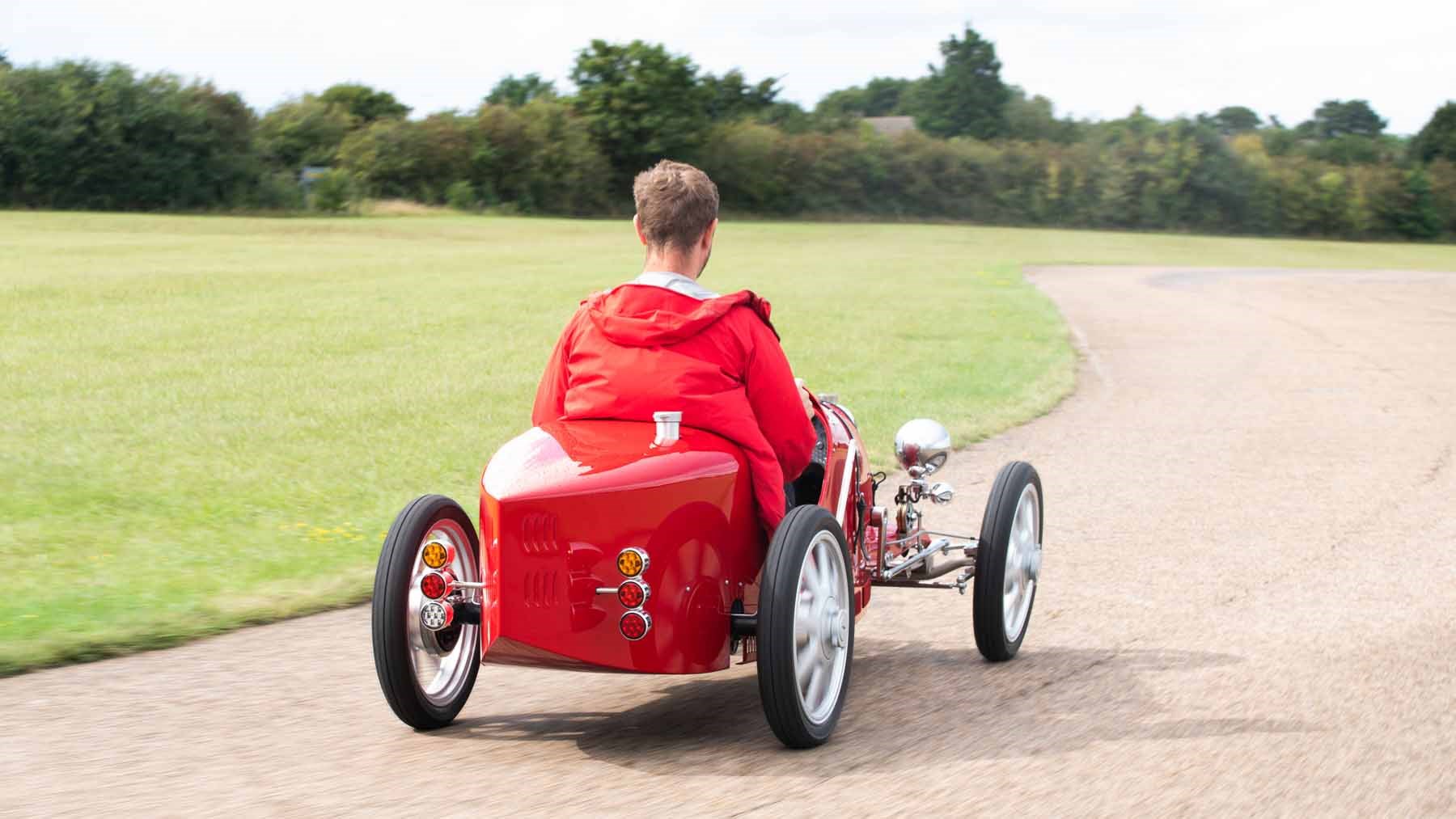► Brum goes to Goodwood Revival
► Bugatti’s beautifully finished 3/4 size Type 35
► 13.4bhp is less than a Chiron, but good for 42mph
Pop quiz: would you rather fight a horse-sized duck or 100 duck-sized horses?
In reality there’s no right answer to that question – a massive duck would lack the bone density to support its own weight, while miniaturised horse lungs wouldn’t have the surface area for efficient oxygen exchange.
What we’re getting at here is that things are often the size they are for a reason.
Toy cars fall into this trap – convincing enough while static but unable to provide an authentically downsized driving experience. Engine components are tricky to shrink, chassis rigidity hard to achieve, and the performance lacking even relative to the new proportions.
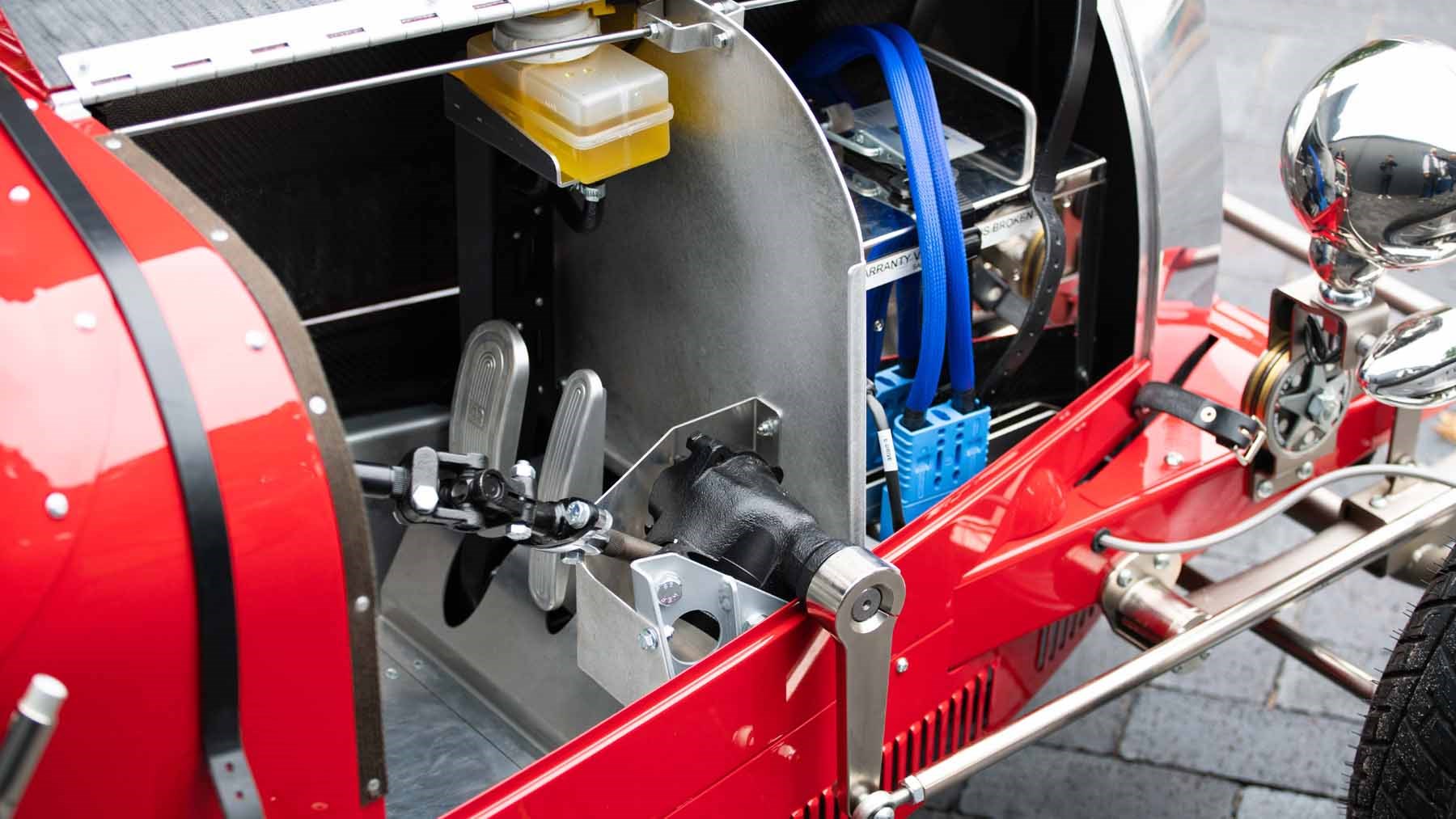
This isn’t a toy though, it’s a £50,000, three-quarter sized scale replica of the Bugatti Type 35 race car capable of 42mph – designed to not only look identical to the real thing, but to drive like it too.
I feel like I need a bit of background…
The Bugatti Baby II is the French maker’s 110th birthday present to itself. Revealed in prototype form at the 2019 Geneva International Motor Show, it’s now in full production for a limited run of 500 customers.
It’s a nuts and bolts replica of the 1924 Type 35 Lyon Grand Prix car, powered by an electric motor and available in three specifications.
But it’s also a tribute to the original Bugatti Baby, when father and son team Ettore and Jean Bugatti constructed a half-sized Type 35 for the family’s youngest son Roland, to celebrate his fourth birthday in 1926. Customers went wild for the scaled down racer and Bugatti produced 500 more over the next ten years – cherished examples of which now command values of £100,000.
In its most elaborate, hand-crafted aluminium form, the Baby II costs about half that, making it something of a bargain – in terms of Bugatti ownership at least. At the other end of the scale, a full-size Type 35 would set you back between £1-2million. Which is quite a bit more.
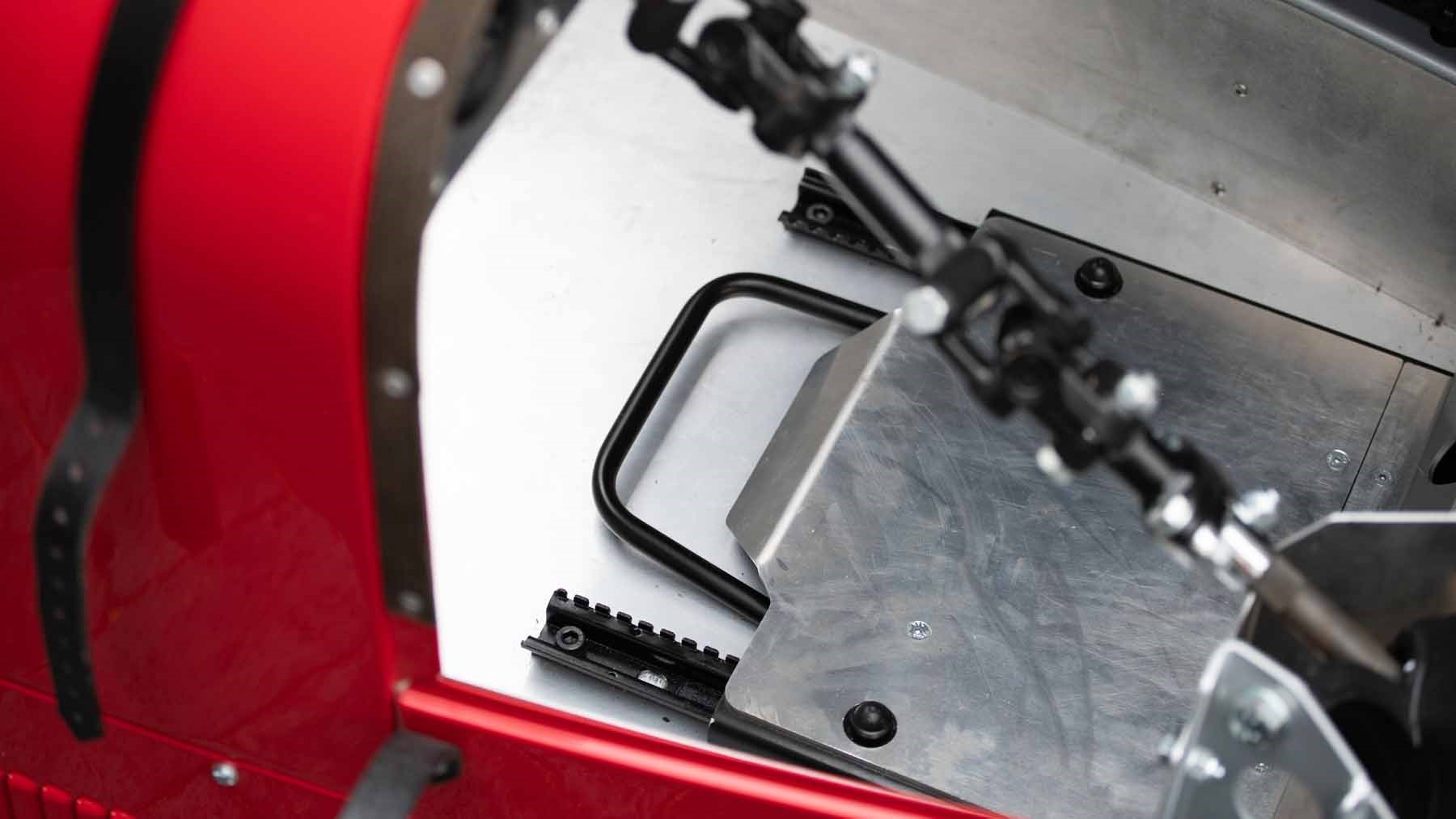
Plus due to the new car’s extra cabin room, sliding pedal box and powerful motor, there’s added value in the fact it’s no longer the preserve of small children like the original – the Baby II is designed for drivers aged 14 and above (largely because its 48v powertrain means it can’t be classed as a toy) and it can even accommodate substantial adults. Like me.
You’ve driven this thing?!
Yes, and where else to drive this reimagined classic but the Bicester Heritage Centre’s twisty test track, where I also drove another small, red, vintage race car – the Skoda 1100 OHC. It’s made in the UK by The Little Car Company with the brief of producing the greatest junior car ever created, and built to automotive rather than plaything standards, so it feels incredibly robust even with a 90kg adult on board.
That’s hardly a surprise when the engineering team draws experience from Ariel and McLaren, among others, and digitally scanned a Type 35 in 3D in order to recreate it precisely in miniature. The high-tech equivalent of putting the old car in a big photocopier and pressing reduce to ¾.
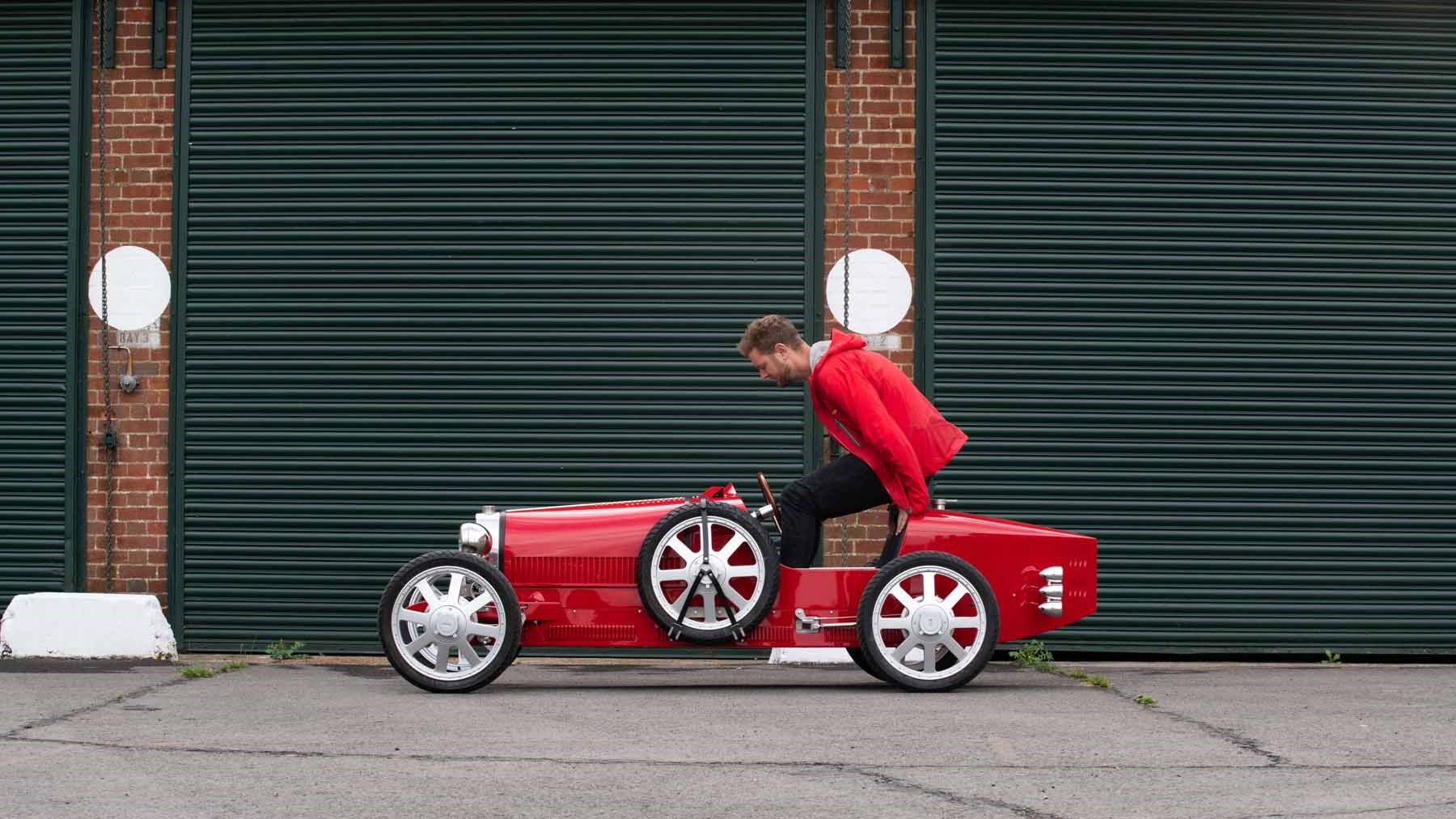
Although the result looks just like the original – a car from the 1920s, remember – there’s much in the Baby II’s production that couldn’t have been done ten years ago, let alone 100. Power dense battery cells, 3D scanning and additive manufacture, for a start.
Enough nerding out, what’s it like to drive?
Fast! Press the beautifully milled aluminium accelerator pedal and the 230kg car leaps off the line, bumping into its 42mph top speed with the sort of exuberance that suggests it’s capable of quite a bit more.
This does all rather depend on which version you get though – the Base model offers two power modes (1kW and 4kW) with 12 and 28mph top speeds respectively. Vitesse or Pur Sang cars build on these with a Bugatti Speed Key (like the Chiron) that unlocks the full 10kW, or 13.4bhp, reaching that loft top speed in about six seconds. You will want this version.
How long does the fun last though? Well, driven carefully the Vitesse and Pur Sang cars with their larger 2.8kWh battery can manage 16 miles of range to a charge (the Base has a 1.4kWh) although double that has been recorded by a test driver. Regenerative braking claws back electrons for the battery and gives a sensation of powerful engine braking, as you’d expect from a historic racer.
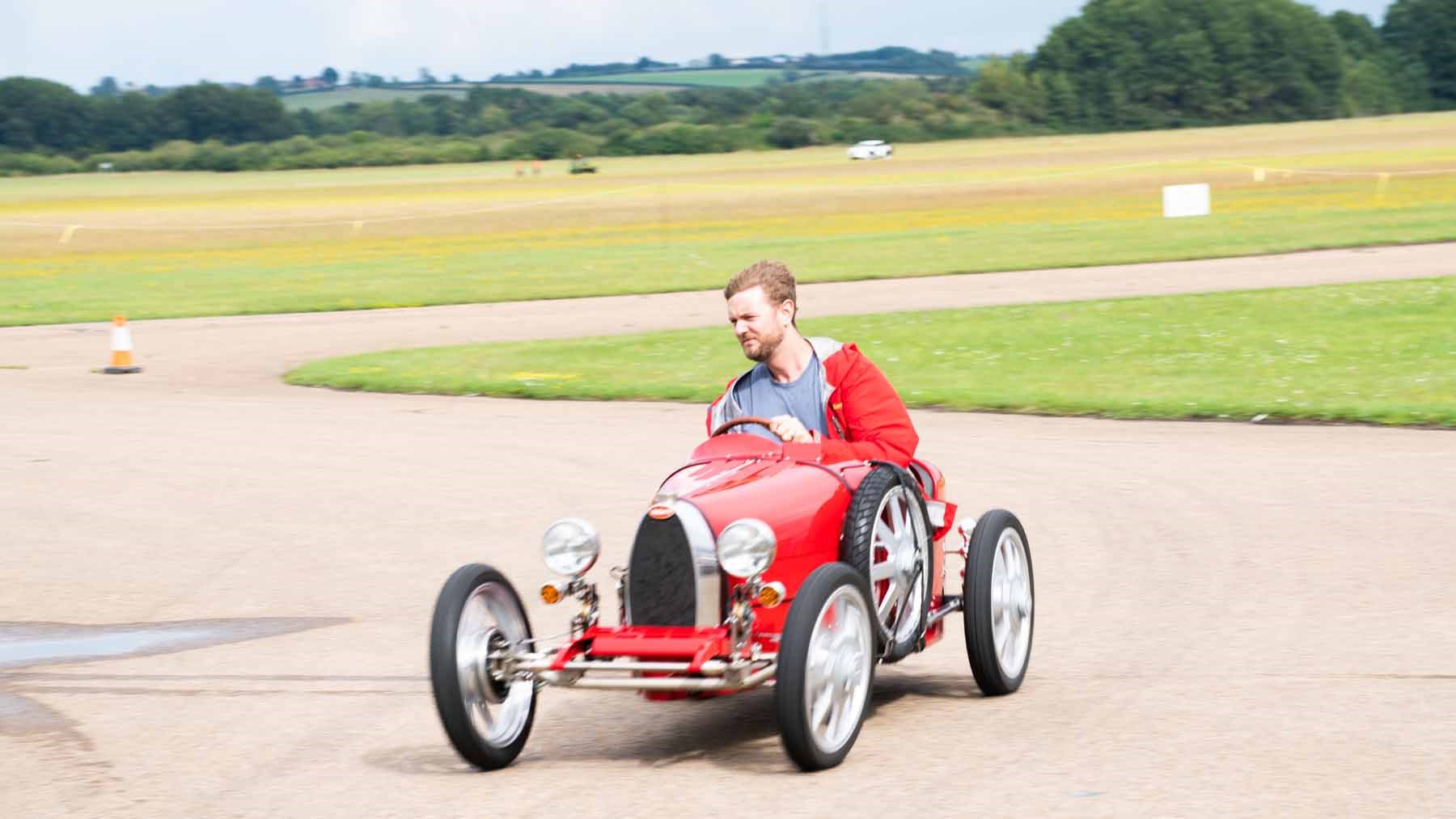
Charging takes between four to five hours, although you can just whip the flat battery out and replace it with a full up one in a matter of minutes, for (virtually) non-stop action.
Does it handle like a Type 35?
Le Mans winning Bugatti test driver Andy Wallace certainly seems to think so, especially, he said, the way the rear end hops vertically in corners. Although the Little Car Company have dialled the throttle map back a bit after he said it was too aggressive.
In theory it should handle just like the bigger car, because it has all the same ground-breaking hollow front axle, chassis hard points and suspension geometry as the Type 35, save for the kingpin angle which had to be adjusted to reduce tyre scrub. Looking out over the long bonnet at those hilariously cambered front wheels is enough to instantly transport you back to the early 20th century.
The only things that differ really are the adjustable dampers (not an option on the original car) and an upgrade from cable to hydraulic drum brakes. These are surprisingly strong and consistent in the Baby II, but in fairness, it’s not like they’ve got a lot of mass to slow down. It does ride quite firmly but given that you’re sat directly over the rear axle, that’s hardly a surprise, and this position does at least telegraph how much the rear end is sliding around so you can counter it nice and early.

It’s not just the brakes that are over-engineered too – much like the journalist behind the wheel, it would be easy to strip 20kg from the car, but the Little Car Company wanted it to be reliable and stout-feeling rather than flimsy and toy-like. As such it runs on a solid steel chassis and aluminium honeycomb floor that make it feel incredibly stiff even when cornering hard. There’s no slack in the steering and when you turn in you can watch the open front wheel hitting the exact spot on the corner you aimed for.
A limited slip differential (yes, really!) helps in this regard too, meaning more traction when accelerating out of bends than you’d give the skinny tyres credit for. The Michelin rubber’s off-the-shelf too so easy to replace when you eventually scrub them bald, and the steering box is from a VW Beetle rather than a custom produced piece.
Leaf-spring suspension on the front axle does a decent job of keeping the front wheels in contact with the tarmac and the Baby II handles with a wonderful balance overall. It’s hard to get unstuck even in the most powerful mode and with a vague nod to smooth braking, cornering and acceleration you can maintain a surprising amount of pace. The photography tracking car (a VW Golf) had a hard time keeping up around Bicester. Mainly because piling on the speed lap after lap is easy and addictive.

If you’re buying one for a younger relative make sure you go full Christmas-morning-Dad and spend three hours ‘setting it up’ and ‘testing it’ before you hand the keys over. Honestly, I can think of modern sports cars that are less fun to drive.
Put the incredible level of detail and build quality aside and the way it drives is the nicest thing about the Baby II – a car you’d normally assume was destined for static collector’s item status – that just happens to be so much fun it might convince owners to use them properly.
Tell me more about this level of detail
Have some rapid fire facts to start off with – the wheels are made by the same company that makes OEM rims for Ferrari and McLaren, the Bugatti badge is a scale replica of the one found on the Chiron (and too is made from solid silver) and the wooden-rimmed Nardi steering wheel features the world’s smallest quick release to ensure the mechanism remains hidden, for realism’s sake.
That’s a handy addition, the quick-release wheel, because getting in and out can be a bit of a squeeze for an adult. We drove a car with a longer steering column and this was much less cramped than the standard version – the pedal box has about as much room as a Caterham and is ofset very-left, while the wheel rubbed on my thigh, but no worse than it does in a Mazda MX-5.

The longer you look at the interior the more incredible it gets – the Type 35’s Smiths dials are replicated in exquisite detail, down to the font and needle shape, albeit it with some adaptions due to the electric drivetrain – the fuel pressure gauge now shows how much charge is in the battery and the oil gauge shows the power used. The tacho has been swapped for a speedometer too.
To select drive, neutral or reverse you use what would have been the fuel pump handle in the Type 35, and the original’s turned aluminium dashboard features swirls modelled on the size and shape found in a Veyron. It’s things like that which set this apart from a Toys-R-Us Audi R8.
Altogether the Baby II feels exactly like a car but smaller, rather than a child’s play thing. Put it this way, although not road legal from the factory, several owners have already enquired about getting Individual Vehicle Approval…
Wouldn’t it need brake lights and indicators and stuff for that?
Yes but the good news is that you can get those (and some mudguards) with the optional Touring Pack. All cars get a horn and headlights though, the latter borrowed from Caterham but with LED internals for brighter illumination.
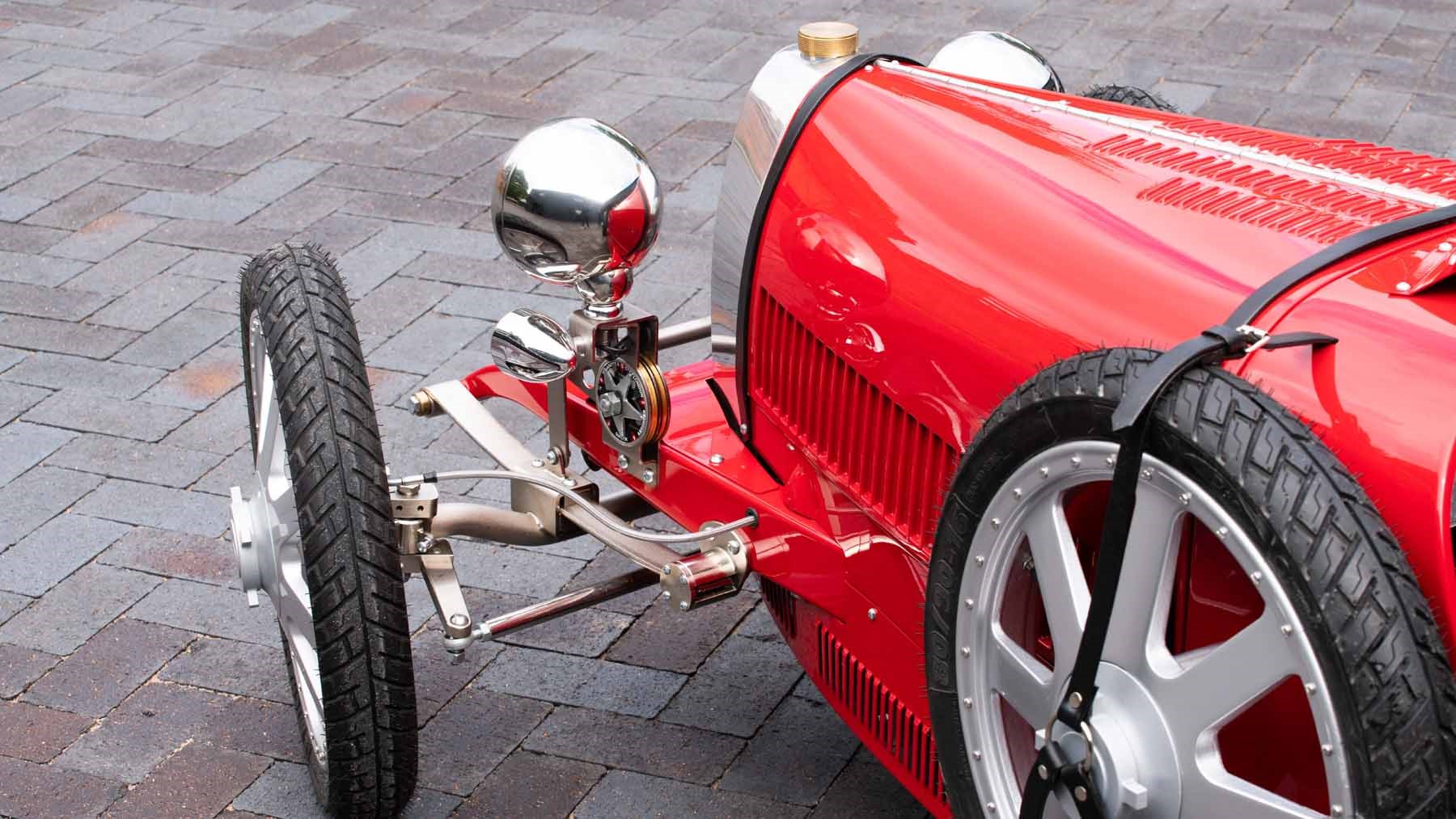
The Base spec car has composite body panels, the Vitesse carbon fibre and the top Pur Sang model has a hand crafted aluminium body that takes more than two hundred hours to create. It sounds great though, the engine covers flapping against the bodywork as you traverse a rough surface for an authentic soundtrack.
The standard colour is French Racing Blue with a black leather interior, but there’s a palette of contemporary Chiron hues to choose from, plus vintage finishes named after famous racing drivers.
Other options include the Speed pack with slick tyres, race jack, a faster steering arm and a chock for the seat to stop you sliding around, plus the Transport pack, which is essentially a custom fit flight case to pack the car into, movable by a fork lift.
Verdict
There can be no bigger compliment to the craftsmanship that goes into the Baby II than this: the Bugatti Owners Club, which famously views new Bugattis with suspicion, has given it a page in the official magazine.
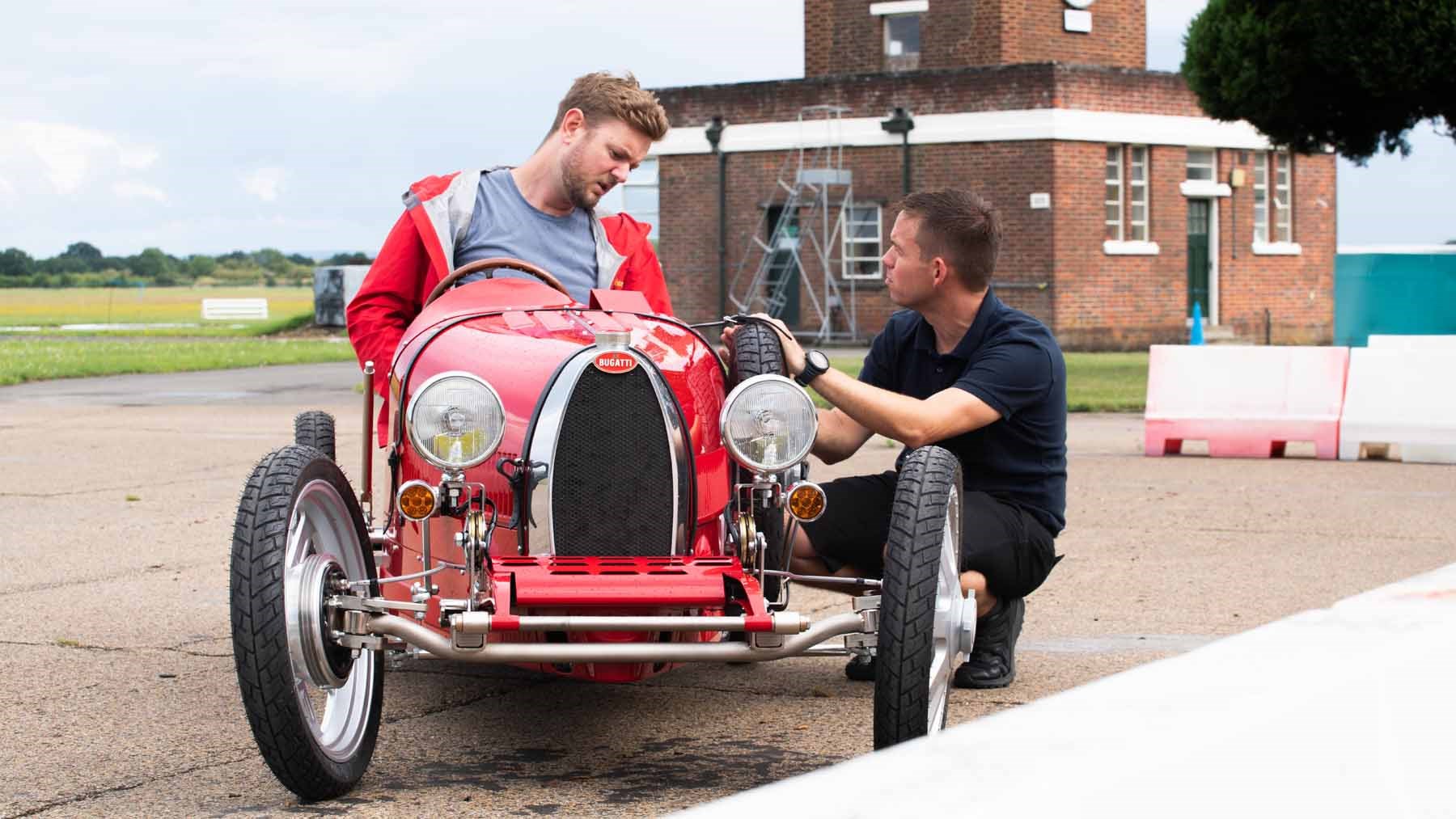
And in reality it’s that community that you’re buying into as much as the car itself – you’ll also gain membership to The Little Car Club, which hosts events at racetracks, like a scale model version of the Ferrari FXX programme.
In the cold light of day £27-£52,000 seems outrageous steep if you view the Baby II as a child’s play thing, but it’s so much more than that. This isn’t a toy car for kids, but a scaled down Bugatti complete with all the performance and quality as you’d expect. Going wheel to wheel with a dozen other scale Bugattis on a go-kart track sounds like something of a dream afternoon, doesn’t it?
All 500 models sold out within three weeks of the 2019 Geneva show but changes in customer circumstances due to recent global events (you know which one) means there are a few built slots left on a first come, first served basis. Best hurry up if you want one.
